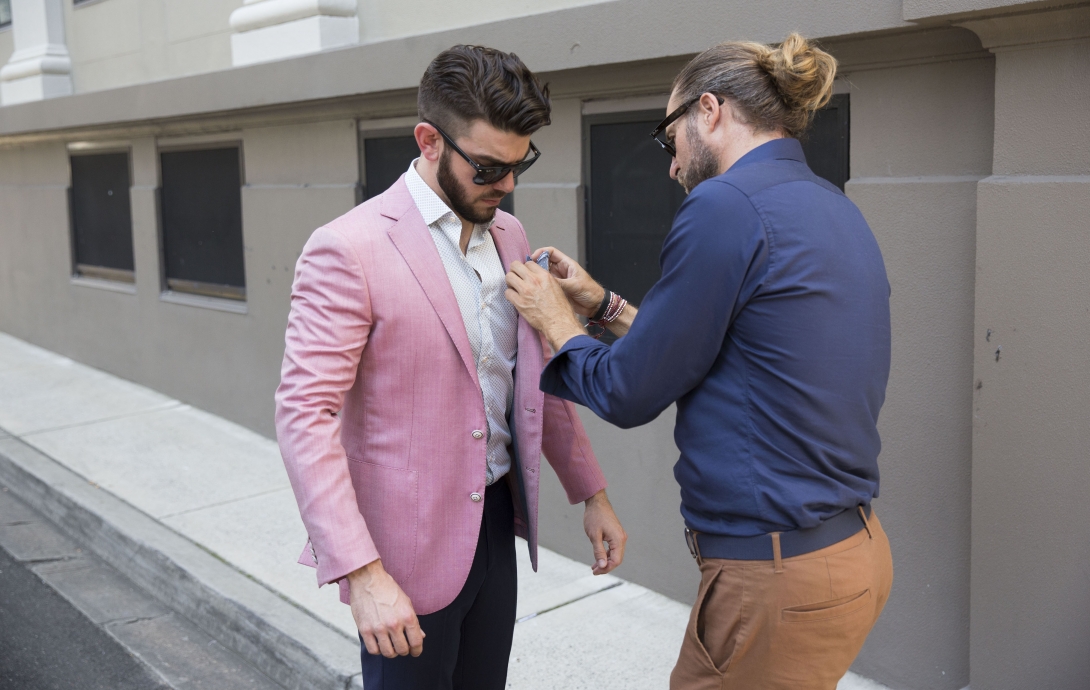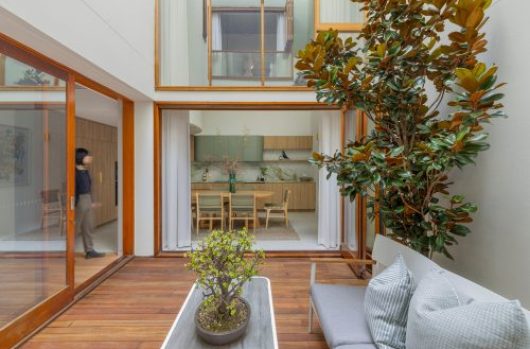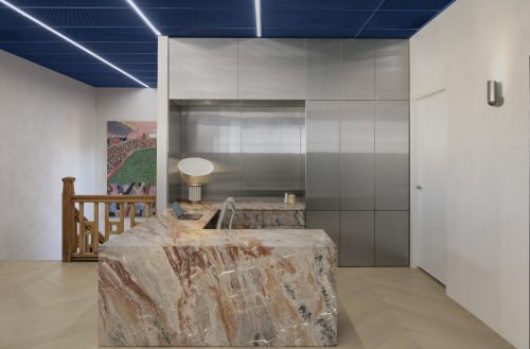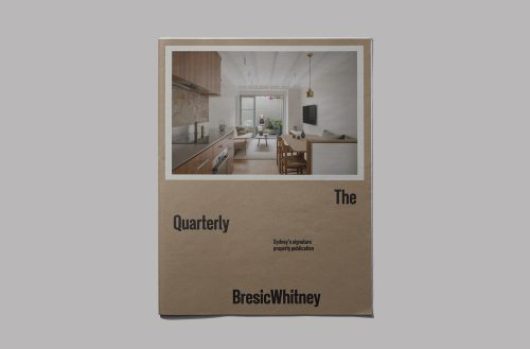The secret life of suits
Fashion is an instant language, said Miuccia Prada, a woman who knows her denim from her chambray. If fashion is a language, what is the modern man trying to say? In a room full of doctors, lawyers, creatives and sales professionals – could you decode the non-verbal cues?
A quick look around any inner-city café confirms some distinct industry standards. For example, creative industries support a more casual look. Advertising gurus, designers and restauranteurs are sneaker freakers in suits. While film types still wear RM’s with skinny jeans. Architects wear all black.
Barristers and solicitors love rules and try not to break them. Legal counsel play it safe, with matching suits and ties by Bulgari or Hermès. Tech entrepreneurs dress like uni students, in crocs, ripped shorts and their own logo t-shirts. When it comes to real estate agents, they’re easy to pick. Who else would rock a three-piece suit on a Saturday when they’re not going to the races?
“Unfortunately real estate agents are known for their navy blue uniforms and I really don’t think that is necessary,” says author and fashion stylist Jeff Lack. “The agents should not all look the same, they should look individual. Whether it be their shoes, their socks, their glasses or their haircut,” says Lack.
It seems individuality is holy grail. With the publication of his first book Indulgent, Jeff Lack has become a passionate advocate for how dress can convey credibility and confidence. We invited him to evolve the style of four of our team in M.J Bale suits. While he was busy dressing the men, we stopped in for a chat with Porter Dowd the Head Tailor at Patrick Johnson Tailors, a steadfast proponent of timeless style and custom suiting. We also headed deep into the CBD to get the good oil from Ross Poulakis, General Manager at clothing emporium Harrolds.

According to Porter Dowd, Aussie men today are slowly catching on. “Australian guys are starting to take more pride in their appearance,” says Dowd. “It is typically those men in client facing industries that tend to care more about their appearance.”
Despite some industry commentators suggesting men will soon burn the dreaded neck tie, Dowd is a purist who encourages all of the finishing touches a classic suit demands. “I am still a firm believer in the suit and tie as professional workplace attire, especially for those in client-facing roles. A client is never going to think less of you for wearing a tie, however there are instances where an open neck could be construed as disrespectful or lazy. It is better to be safe than sorry.”
So do the same rules apply to after hours kit? Will BBQ’s everywhere soon see the end of the band T’shirts with cargo pants ensemble? Dowd is positive. “Australian guys are also slowly starting to come around to the idea of dressing a little more sartorially outside of the workplace. As such we have seen increased interest in separates in the last couple of years. The biggest change is that guys are starting to understand that a jacket can be worn quite casually and in lieu of a sweater, for a more put together but still casual look,” he says.

Ross Poulakis, General Manager at clothing emporium Harrolds, agrees modern professionals need to walk-the-talk 24/7. “Dressing well isn’t a 9 to 5 job. It’s most important to find your own personal style and make it work for you all the time,” Poulakis says.
“The way you dress should elevate the way you feel and set the tone for your day. If the upshot of that is you develop a classic aesthetic or embrace trends – it is up to you. Style is universal, there are no hard and fast rules. At Harrolds we offer a styling service in house, but it’s less about rules and archetypes, and more about encouraging and understanding individual style,” Poulakis says.
“In general all our customers are very conscious about what they are wearing, but the stereotypes of different industries sometimes hold up. Young creative professionals such as architects wear brands like Maison Margiela, while doctors and lawyers tend to go for more classically tailored suits,” he says.

Jeff Lack believes more importance should be placed on expression and individualism in the workplace. Men need to work harder to understand their own authentic voice and release a school boy-like obsession with donning a daily uniform.
“Style is really understanding who you are. Your own style comes down to how comfortable you are in your own skin. Age milestones tend to make a difference for men. So when you hit 30 you are no longer a boy, you are a man, you can have a adult conversation with your parents peer-to-peer. Then at 40, you have accomplished something and you are in your absolute prime. Those age milestones make a difference to how a man feels about themselves, and how they can cultivate an authentic voice and expressed in how they dress,” says Lack.
Still, dressing to show flair must fall within some Saville Row like guidelines Lack continues, “Fit is paramount. It is vital that things fit right on the body. It is first thing we notice on a man. Then after fit, colour is the second piece – how it matches with your eyes, skin and hair – and then the third piece is individual style – what you bring to your outfit that is drawn from your unique voice.”

Society as a whole is less formal than ever before, but despite a flattening of hierarchical work structures, work place innovation and campus style offices, we’re not abandoning the neck tie any time soon. The new formality in menswear for the office is here to stay.
Like it or hate it, even strict hipster attire in the utilitarian oeuvre, has an overall formality to it. So too does the trend for custom suiting, made possible by a new category of retailer that now occupies the gap between Roger David and Paul Smith.
Effort on the whole is attractive in the work place. The new look male pays attention to hygiene, grooming, colour, seasons and occasions. More and more the elegant man circa 2015 is following the path of the Greek philosopher Epictetus, who said: “know first who you are, and then adorn yourself accordingly.”




